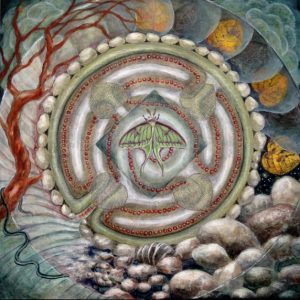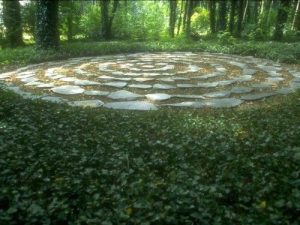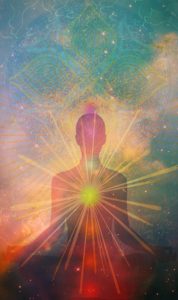 The Columbia City Yoga on-line Moving into Meditation class met this morning. In today’s class we explored the way we view things. We can inform our view with the knowledge that everything is constantly changing. We can find our way by trusting our capacity to allow what emerges in the space of awareness.
The Columbia City Yoga on-line Moving into Meditation class met this morning. In today’s class we explored the way we view things. We can inform our view with the knowledge that everything is constantly changing. We can find our way by trusting our capacity to allow what emerges in the space of awareness.
In this space of awareness we can be touched by life experience directly. In this still space, we can be moved to caring, empathy and compassion.
Our meditation practice was informed by Insight Meditation teacher, Gil Fronsdal’s teaching. Gil and his fellow teachers offer a library of talks, guided meditations and courses through AudioDharma. You can experience his guided meditation, Trust Emergence, in this archive.
 We heard Rosemerry Wahtola Trommer’s poem Directions. You can find more of Rosemerry’s writings and poems on her web-site A hundred Falling Veils.
We heard Rosemerry Wahtola Trommer’s poem Directions. You can find more of Rosemerry’s writings and poems on her web-site A hundred Falling Veils.
Thank you for being here to share practice today. World events are stirring up so much feeling for me. I find myself getting lost in the many voices of suffering one drowning out the other. I often turn to friends and practice to help me during times of uncertainty and upheaval.
The Buddhist Eightfold Path is one that helps me find my way. One of the first steps is called cultivating “right view.” What does it mean to have this right view? How can I navigate life with the right view? How do I form the views I have? These are all living questions that I try to keep alive every day. In is talks on right view, meditation teacher Gil Fronsdal explains that a right view
is a deep view, a deep understanding of how thoroughly things are inconstant, changing and impermanent. . . . [when] there’s deep seeing for oneself of impermanence, inconstancy, change, that can be a catalyst for the mind to become free.
 The invitation is to free ourselves from clinging to our views. As we learn about our minds we can see how we latch on to ideas and interpretations and then on to our projections onto reality. One of our projections is our tendency to make things permanent. This is how things will always be. Or I am this way or that. In stillness we can recognize the suffering created by projecting our ideas onto ourselves and others. We fail to see our changing nature or the constellation of our being. We cling to our expectations of happiness. When we get what we want – whatever that might be – we will be happy. Until we lose our freedom in the next desire.
The invitation is to free ourselves from clinging to our views. As we learn about our minds we can see how we latch on to ideas and interpretations and then on to our projections onto reality. One of our projections is our tendency to make things permanent. This is how things will always be. Or I am this way or that. In stillness we can recognize the suffering created by projecting our ideas onto ourselves and others. We fail to see our changing nature or the constellation of our being. We cling to our expectations of happiness. When we get what we want – whatever that might be – we will be happy. Until we lose our freedom in the next desire.
Perhaps our strongest projection is that of the self. We identify with our histories, ideas and judgments. We believe in who we think we are. As we are able to be with change, experience change, we see that things are always changing. Right view is to see impermanence in a direct, deep way. Meditation helps us to settle, become concentrated and still. It allows us to have a direct experience of everything as vibrating, flowing, pulsing and streaming expressions of life.
Here is Rosemerry Wahtola Trommer’s poem, Directions:
 It is not that the path
It is not that the path
has disappeared. It is only
that, stunned with grief
and kicked by fear,
we sometimes lose our will
to put one foot
in front of the other.
But we are not lost.
Already in the dark
we have found each other.
What astonishes is
that there are so many of us,
and already
we are building bridges
made of light.
The world shakes,
we stumble
and we help each other rise,
and now it is time
for us again to put one foot in front of the other—
not to escape what frightens us
but to walk unflinchingly
toward the messy center of things.
The path we choose now
is not one we’ve walked or even seen before,
the path is one that appears
beneath our feet
with each step,
and we persist,
travelers in the frozen dark
who begin to see the light as it shapes the horizon
and know, though it’s cold,
that the change we dream of
has already begun to arrive.
Here, we are on the path we choose now – it may not be one we’ve walked or even seen before, it occurs beneath our feet with each step. Perhaps with each mindful breath.
Let’s create an inner space in which we can – as Gil Fronsdal suggests – trust what is emerging. Gil suggests that we have:
 an inner functioning . . . that given the right conditions, given enough space and silence, can bubble up and emerge in a wonderful way. [We can] trust what emerges when we get still and when we get out of the way. When we don’t fill our minds and hearts with . . . activities and desires . . thinking and fantasy.
an inner functioning . . . that given the right conditions, given enough space and silence, can bubble up and emerge in a wonderful way. [We can] trust what emerges when we get still and when we get out of the way. When we don’t fill our minds and hearts with . . . activities and desires . . thinking and fantasy.
See if you can be present as if you were listening for a bird call. As if you’re relaxed and quiet and the sound emerges. See if you can be present with receptivity and openness. Find enough quiet to create a sacred pause in which something can emerge. It may be that difficult things will surface, unresolved issues or worries. Trusting emergence asks that we stay open, receptive and uninvolved with what is coming up. Allow. Allow whatever difficulty, whatever joy that bubbles up.
In time we may come to appreciate allowing. We learn to trust not what is emerging. We trust the openness and receptivity that creates the space for things to emerge. We can give things space without getting entangled with what emerges. We can hold it all in mindful awareness.
 Adjust your posture as you need to be relaxed and stable. Gather any support you need so you can make room for emergence – emergence of being. Feel your being begin to settle. As you are ready, take a few deeper inhales to savor the emergence of the in-breath. The inhale begins and grows . . . becomes full, complete. Then let go as you exhale. Let go and allow the exhale to be complete.
Adjust your posture as you need to be relaxed and stable. Gather any support you need so you can make room for emergence – emergence of being. Feel your being begin to settle. As you are ready, take a few deeper inhales to savor the emergence of the in-breath. The inhale begins and grows . . . becomes full, complete. Then let go as you exhale. Let go and allow the exhale to be complete.
As you’re ready let your breathing return to normal. Become attuned to the exhale for the next few breaths. See if you can let go of the exhale without straining, so it’s a little longer, complete. Let your awareness roam around and find a place of tension in your body. On letting go of the exhale, can you do a similar letting go in relaxing the body tension? Relax the muscles of the face. Relax the shoulders. Soften the belly.
Now for the next few breaths, prioritize the inhale by letting there be a brief pause before you inhale. Then let go of the pause allowing the inhale to emerge in whatever way it grows, however it emerges. Allow the inhale to emerge and then let go of the inhale completely let go of it in order to exhale. The inhale is completely gone when the exhale begins.The absence of the inhale allows for the presence of the exhale. The absence of the exhale allows for the emergence of the inhale.
 While you’re meditating trust the emergence of the inhale. During the course of the inhale be open to and trust whatever else happens. See if you can trust whatever it might be and when you exhale let go of everything. Be receptive again with the next inhale. Trust emergence of anything and everything as you inhale. Trust in letting go of everything as you exhale.
While you’re meditating trust the emergence of the inhale. During the course of the inhale be open to and trust whatever else happens. See if you can trust whatever it might be and when you exhale let go of everything. Be receptive again with the next inhale. Trust emergence of anything and everything as you inhale. Trust in letting go of everything as you exhale.
For the duration of the exhale let go of any concern with the inhale or with whatever else has emerged. Trust letting go of your thoughts as you exhale. Then with the next inhale trust what emerges. Trust letting it completely be as you exhale. This kind of letting go is not really making anything go away; it is letting go of any entanglements, involvements, judgments or preferences. Just letting it be as we exhale. Letting it be in a quiet mind. A mind that has some space for things to emerge.
 See if you can trust that open space within, the open awareness that makes room for all things to appear. Make room for what’s deep inside you to be touched, to be moved by what’s happening. Know that we can trust what is touched as the world emerges for us. What sensitivity and tenderness, what empathy can we allow as we trust what emerges within as we are touched by the world around us? Perhaps we can allow ourselves to be moved with love and caring, empathy and compassion. We can be moved by the fragility of life that we share with others.
See if you can trust that open space within, the open awareness that makes room for all things to appear. Make room for what’s deep inside you to be touched, to be moved by what’s happening. Know that we can trust what is touched as the world emerges for us. What sensitivity and tenderness, what empathy can we allow as we trust what emerges within as we are touched by the world around us? Perhaps we can allow ourselves to be moved with love and caring, empathy and compassion. We can be moved by the fragility of life that we share with others.
Perhaps we can allow ourselves to be touched deeply to be moved with love, with care, with compassion with empathy. Our practice can be a source in which we cultivate the space to allow our caring and concern for the world to flow. We can make the world a better place in the smallest possible ways that we are able.
The world shakes,
we stumble
and we help each other rise,
and now it is time
for us again to put one foot in front of the other—
not to escape what frightens us
but to walk unflinchingly
toward the messy center of things.

